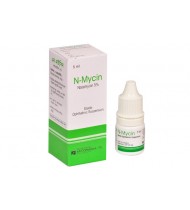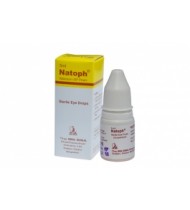Natamycin
Indications
Pharmacology
Dosage & Administration
For fungal blepharitis & conjunctivitis: Less frequent initial dosage, 1 drop 4-6 times daily may be sufficient.
Interaction
Contraindications
Side Effects
Pregnancy & Lactation
Lactation: It is not known whether this drug is excreted in human milk. Caution should be exercised when Natamycin is administered to a nursing mother.
Precautions & Warnings
Use in Special Populations
Therapeutic Class
Storage Conditions
N-Mycin Ophthalmic Suspension 5 ml drop
IndicationsNatamycin sterile ophthalmic suspension is indicated for the treatment of fungal blephari..
100.00Tk.
Natacin Ophthalmic Suspension 5 ml drop
IndicationsNatamycin sterile ophthalmic suspension is indicated for the treatment of fungal blephari..
80.24Tk.
Natagen Ophthalmic Suspension 5 ml drop
IndicationsNatamycin sterile ophthalmic suspension is indicated for the treatment of fungal blephari..
100.00Tk.
Natapro Ophthalmic Suspension 5 ml drop
IndicationsNatamycin sterile ophthalmic suspension is indicated for the treatment of fungal blephari..
100.00Tk.
Natoph Ophthalmic Suspension 5 ml drop
IndicationsNatamycin sterile ophthalmic suspension is indicated for the treatment of fungal blephari..
100.00Tk.




-190x210.jpg)
